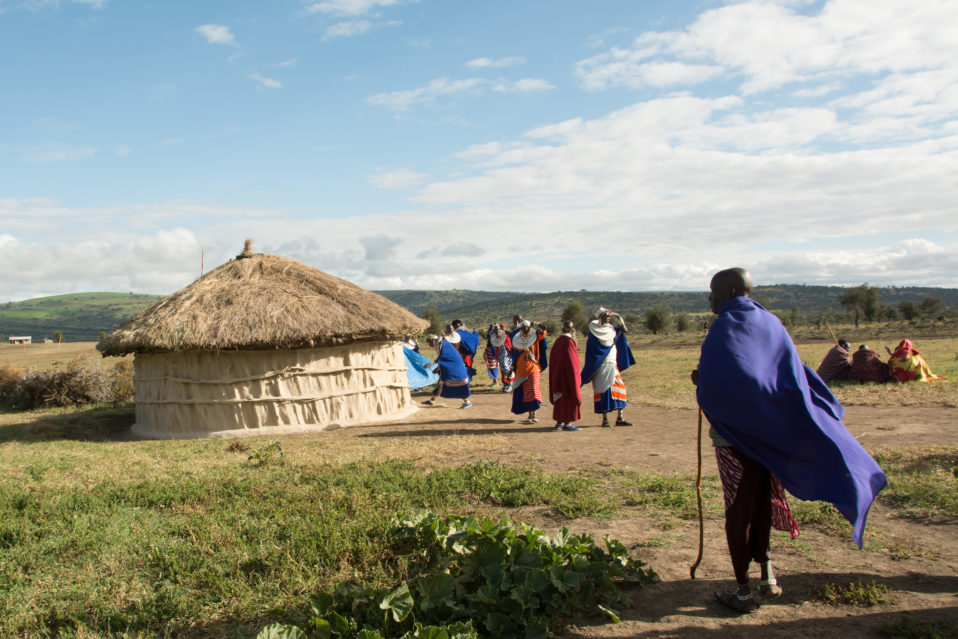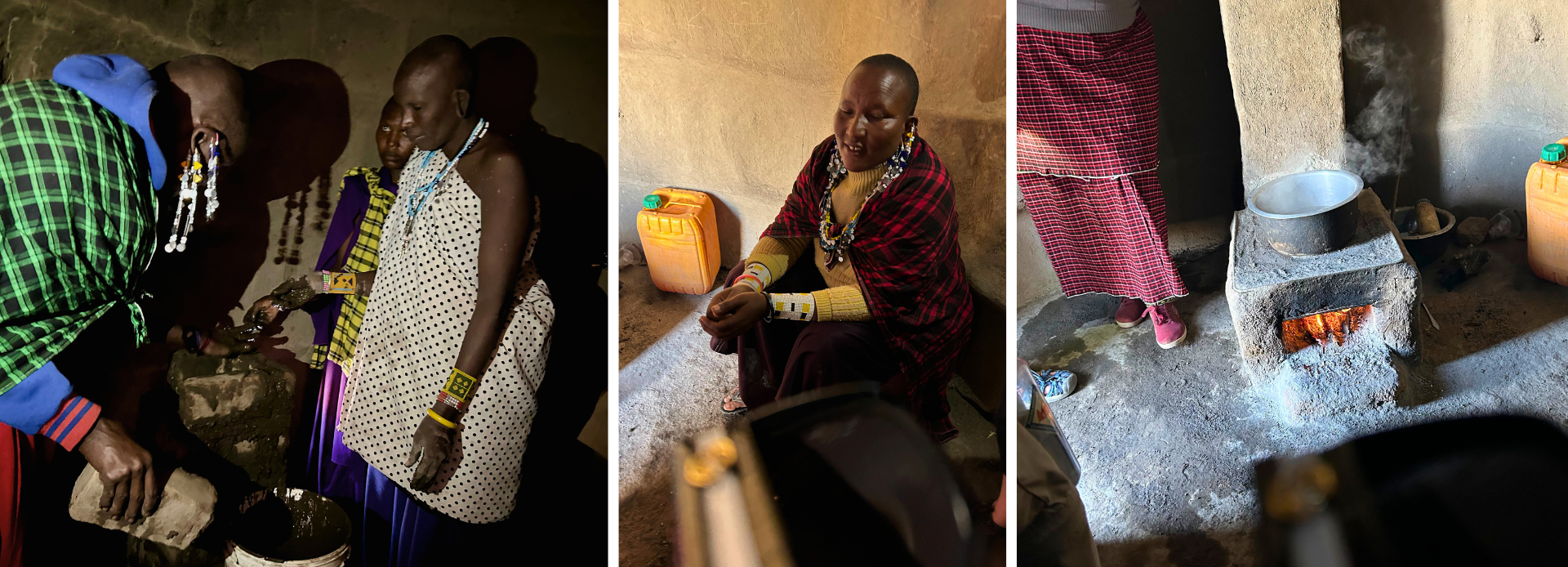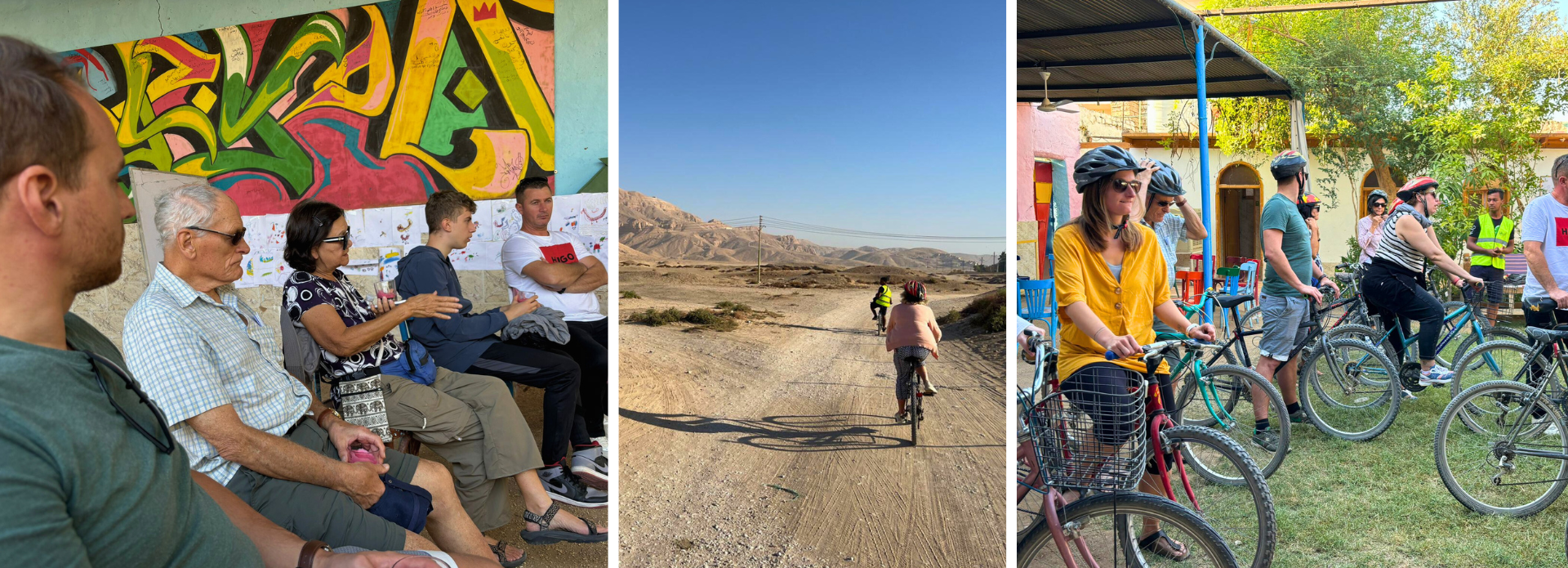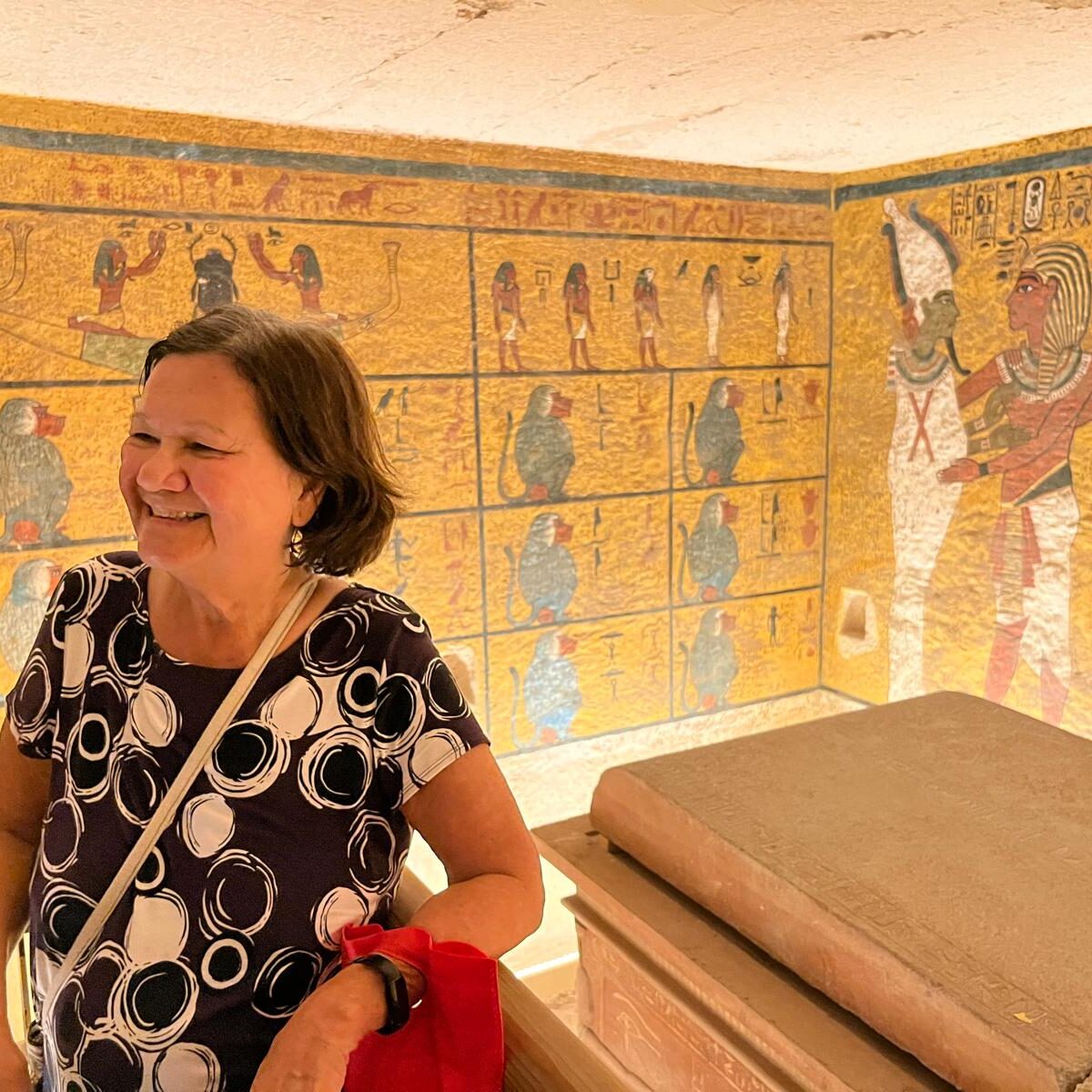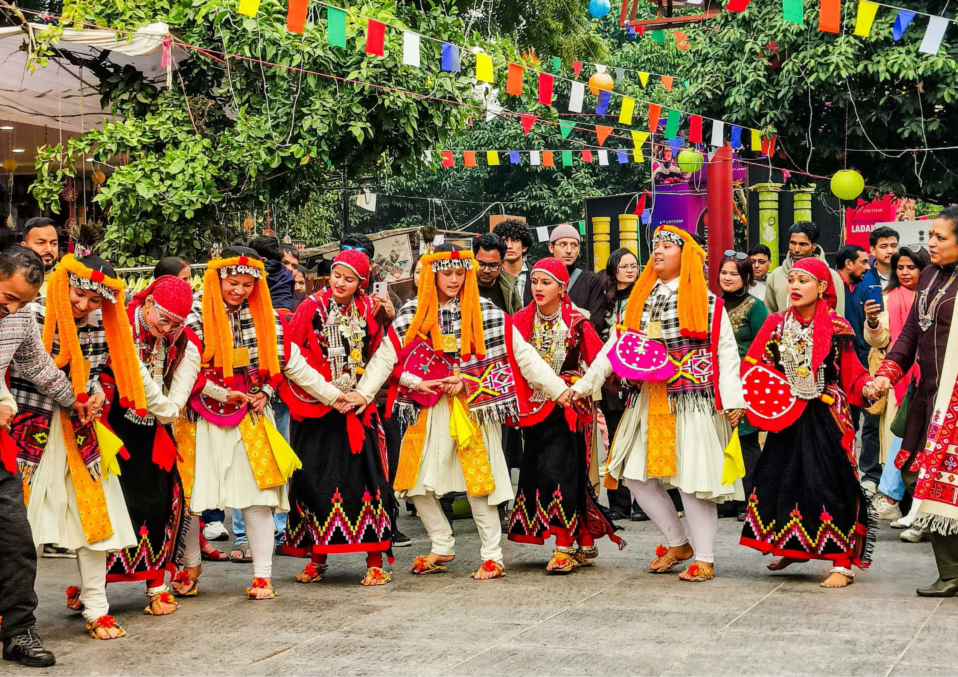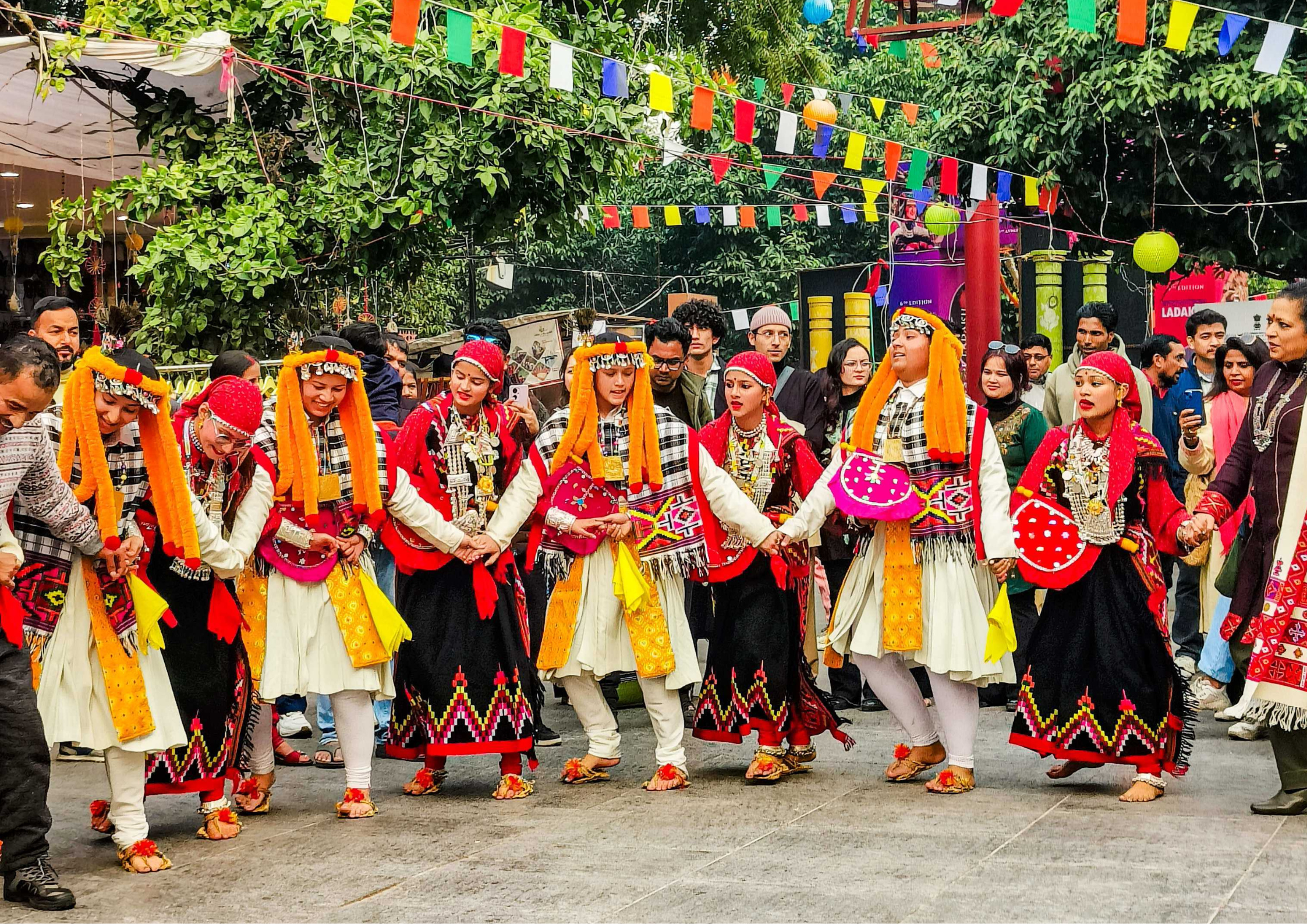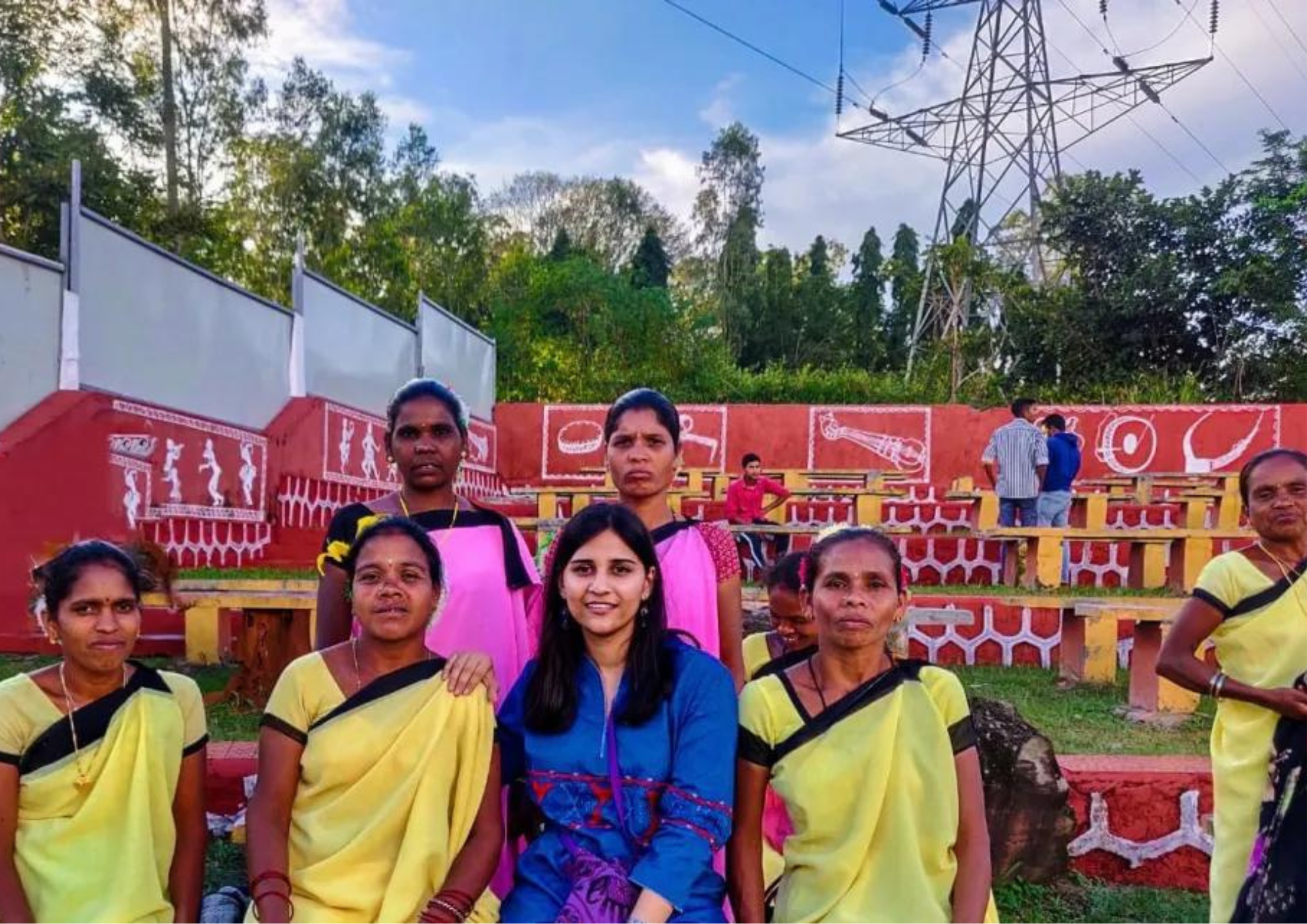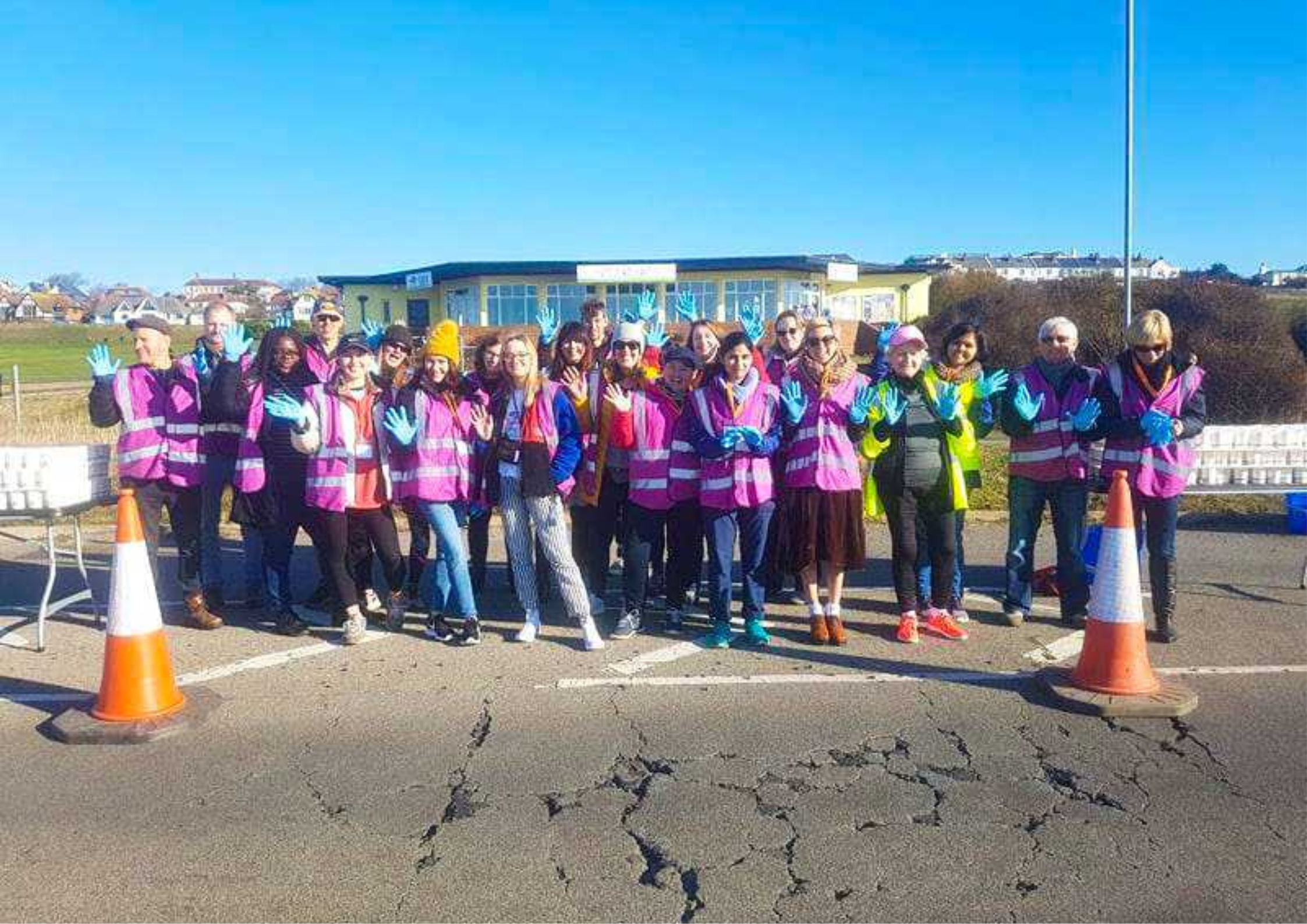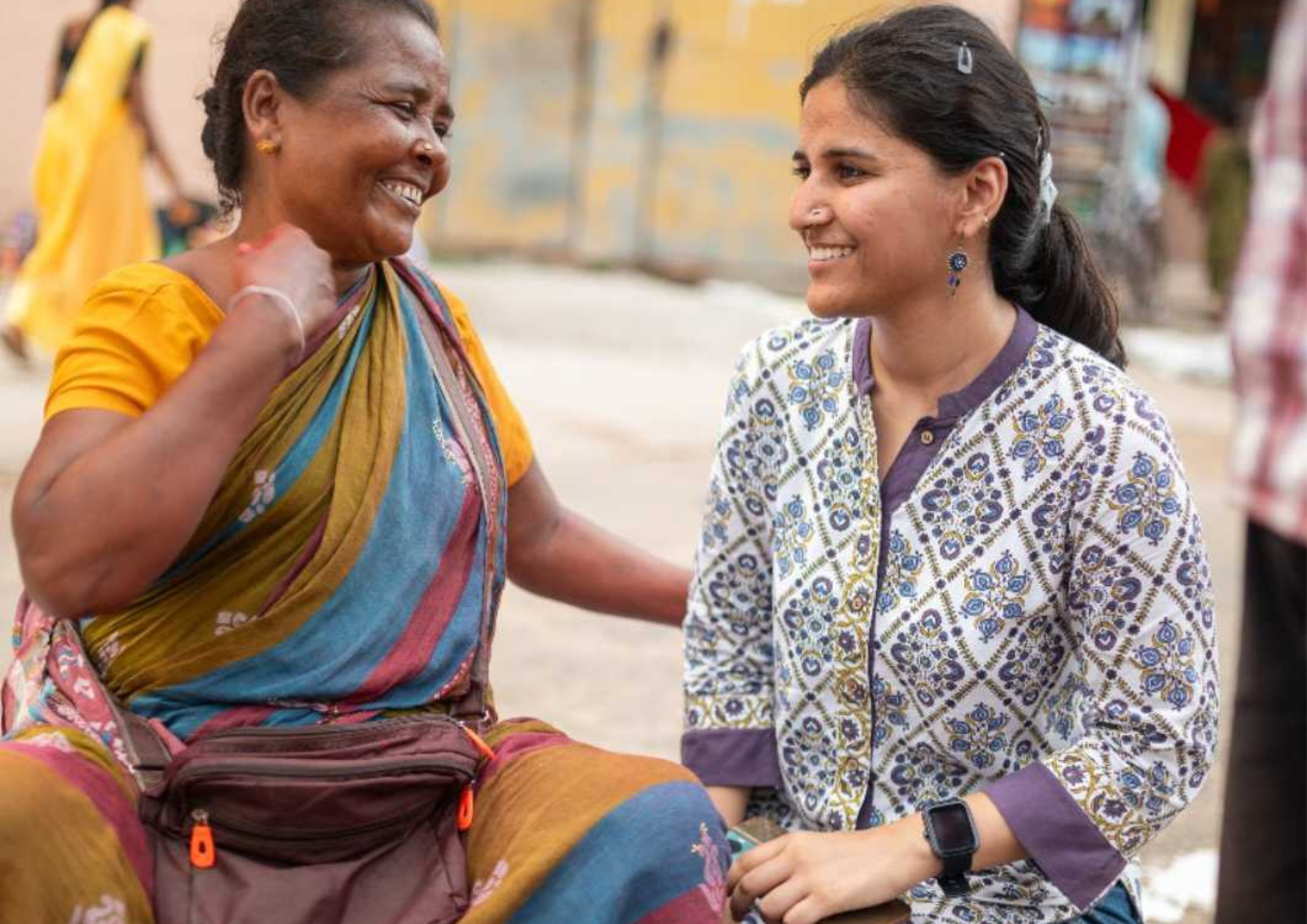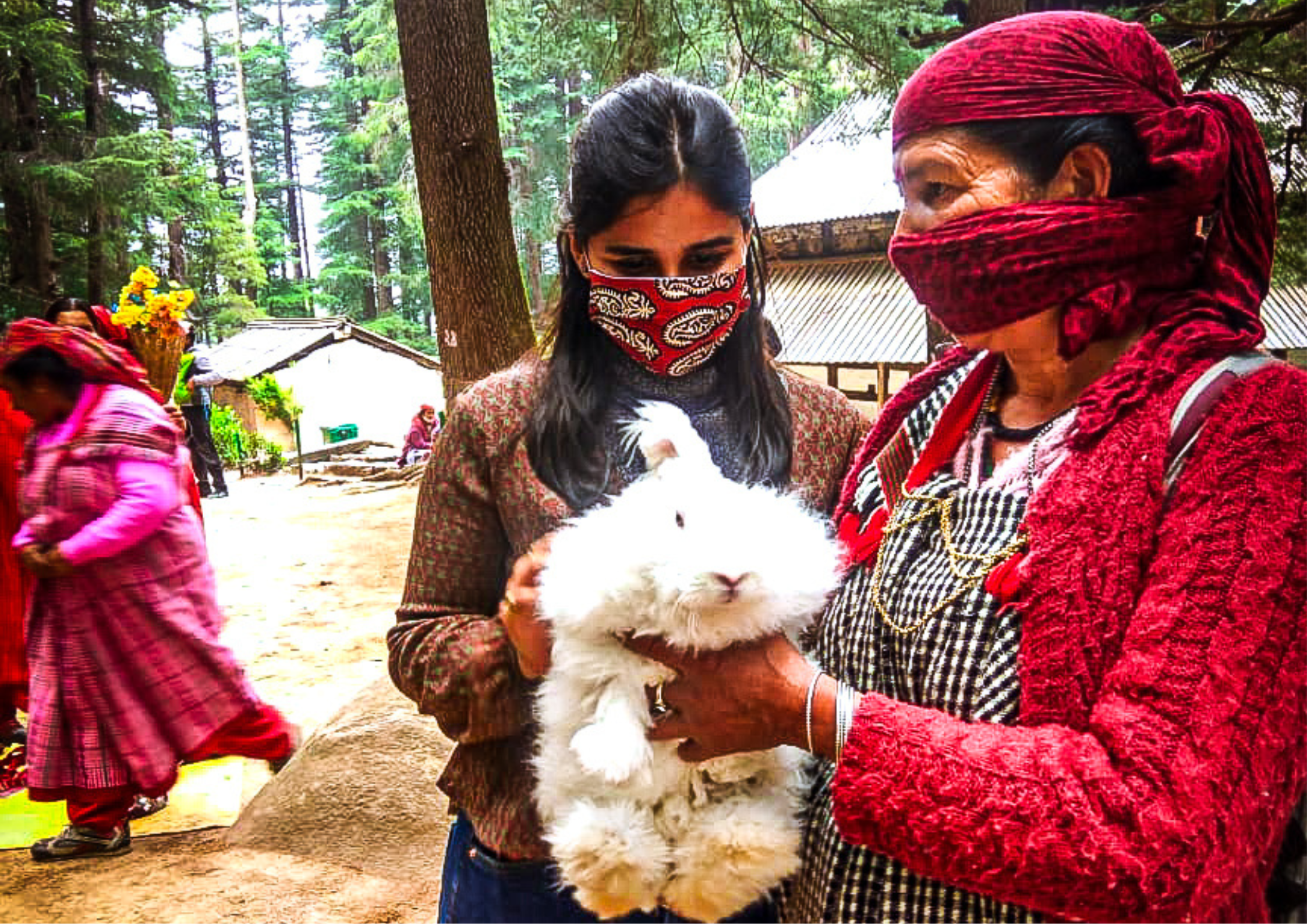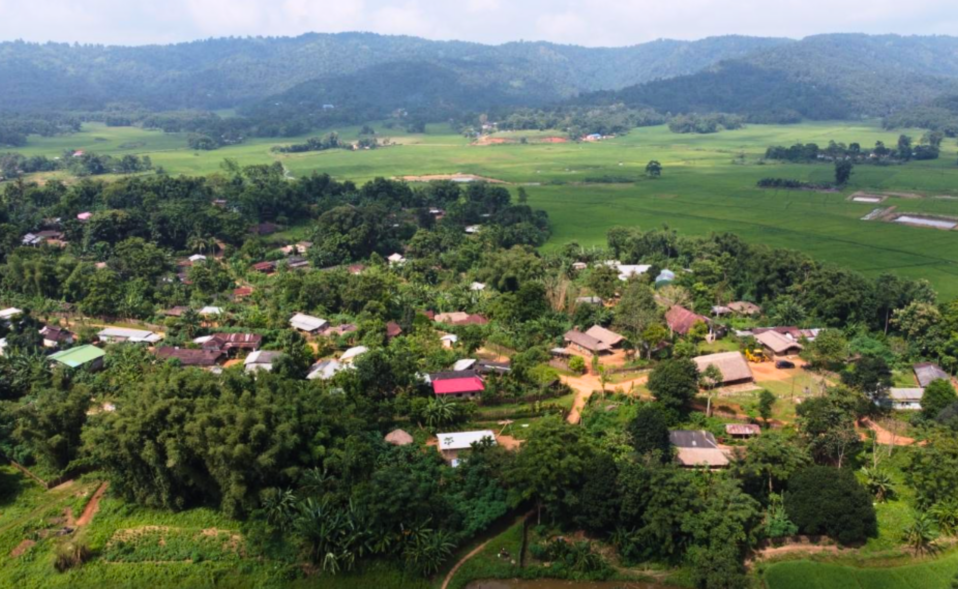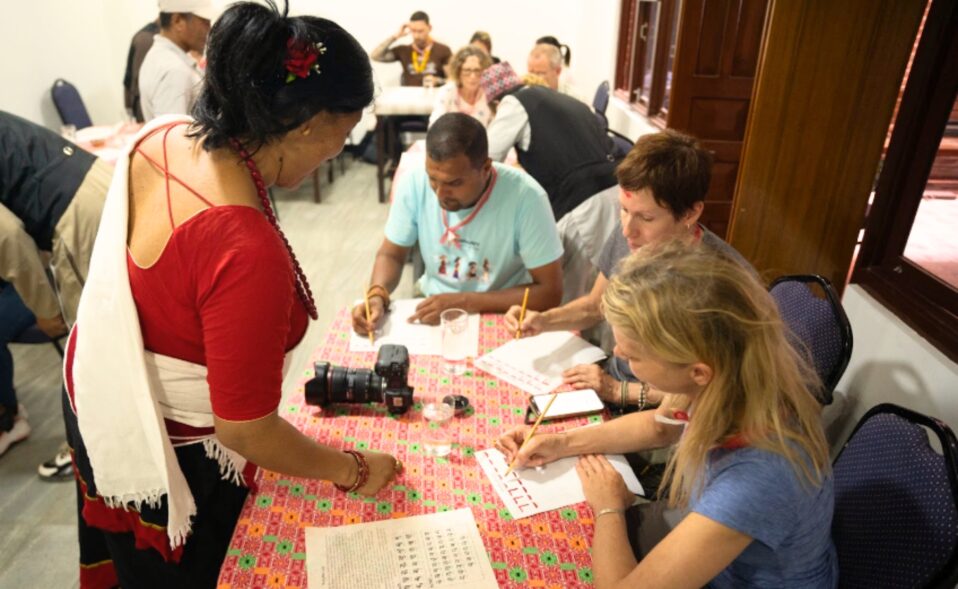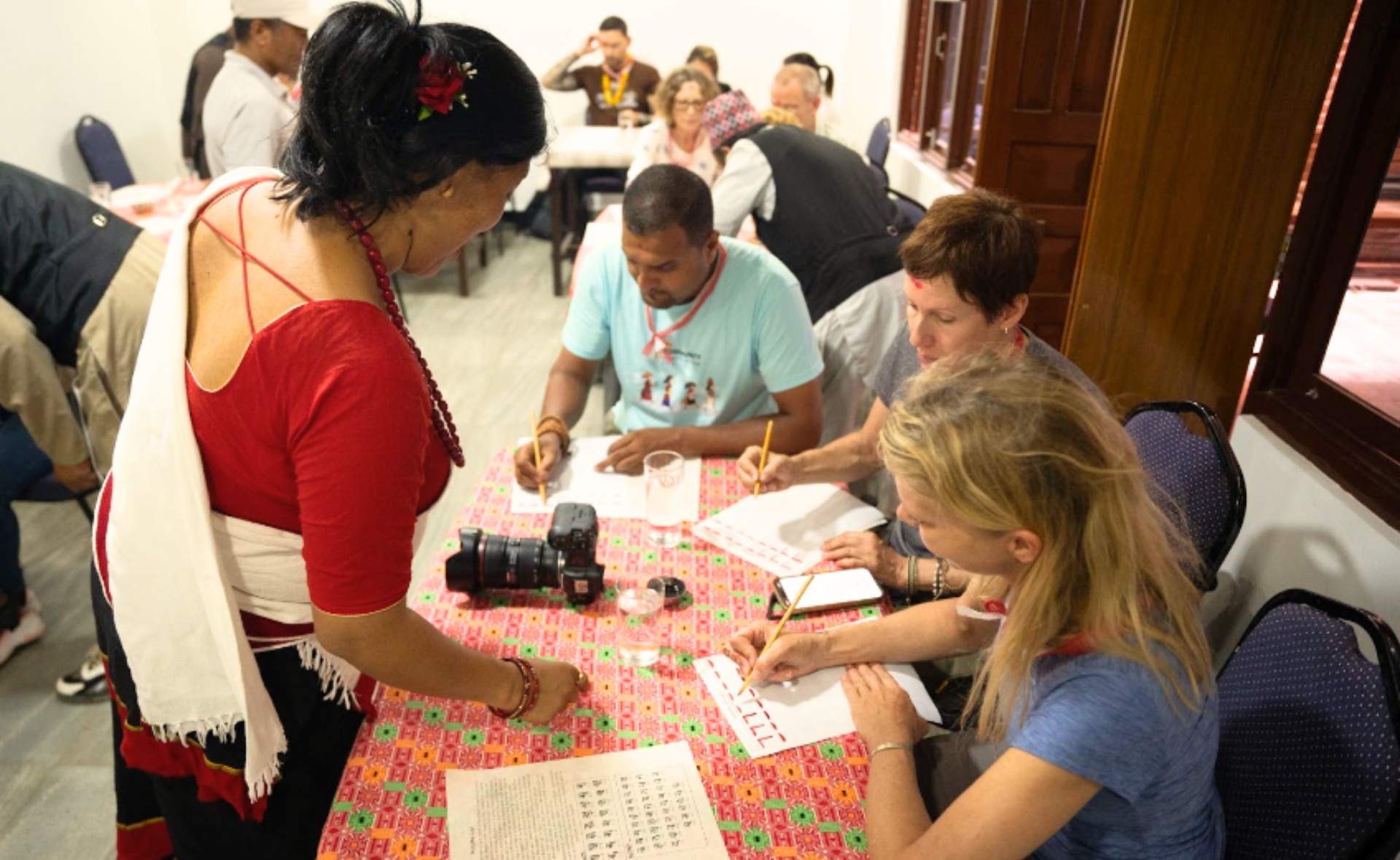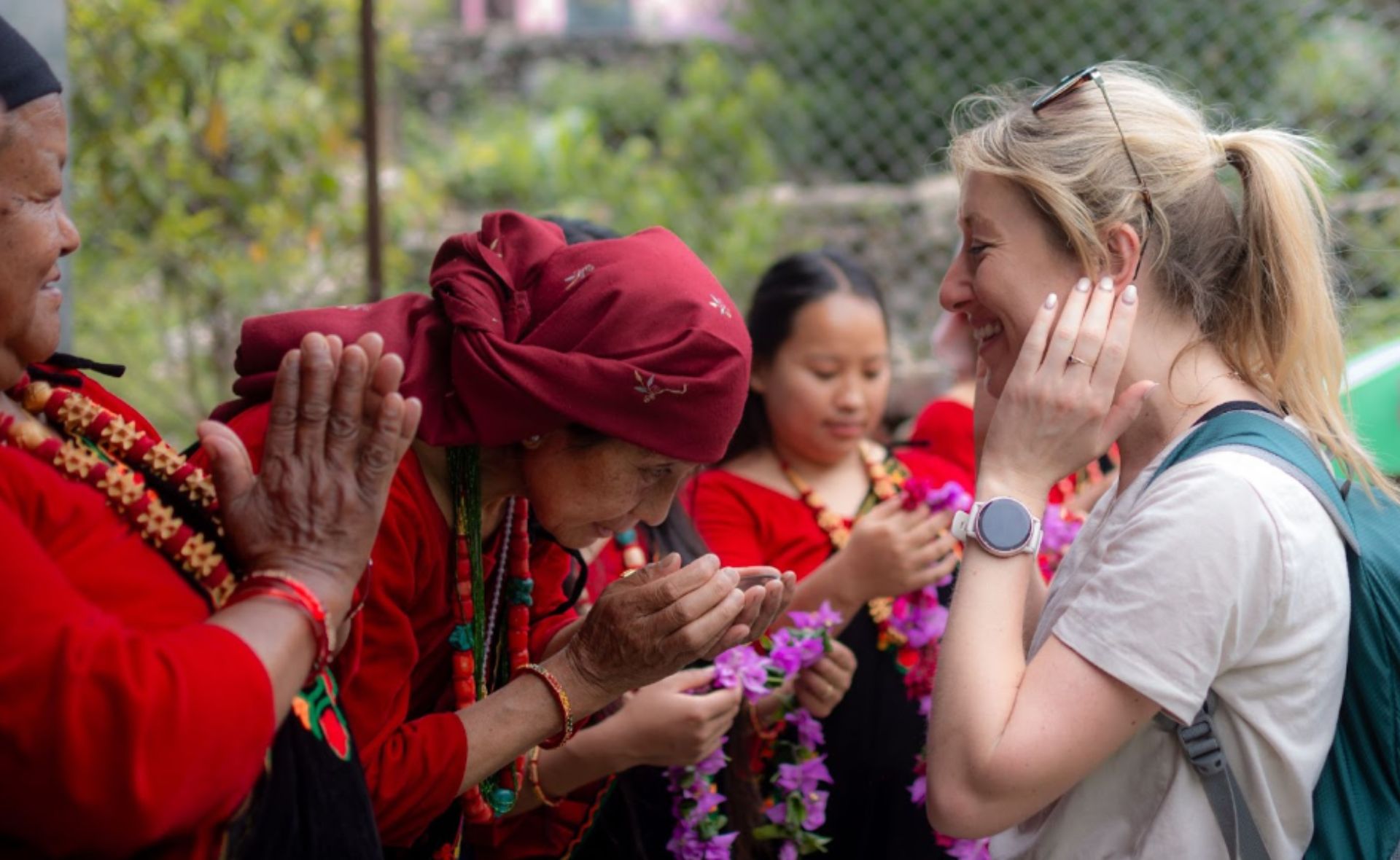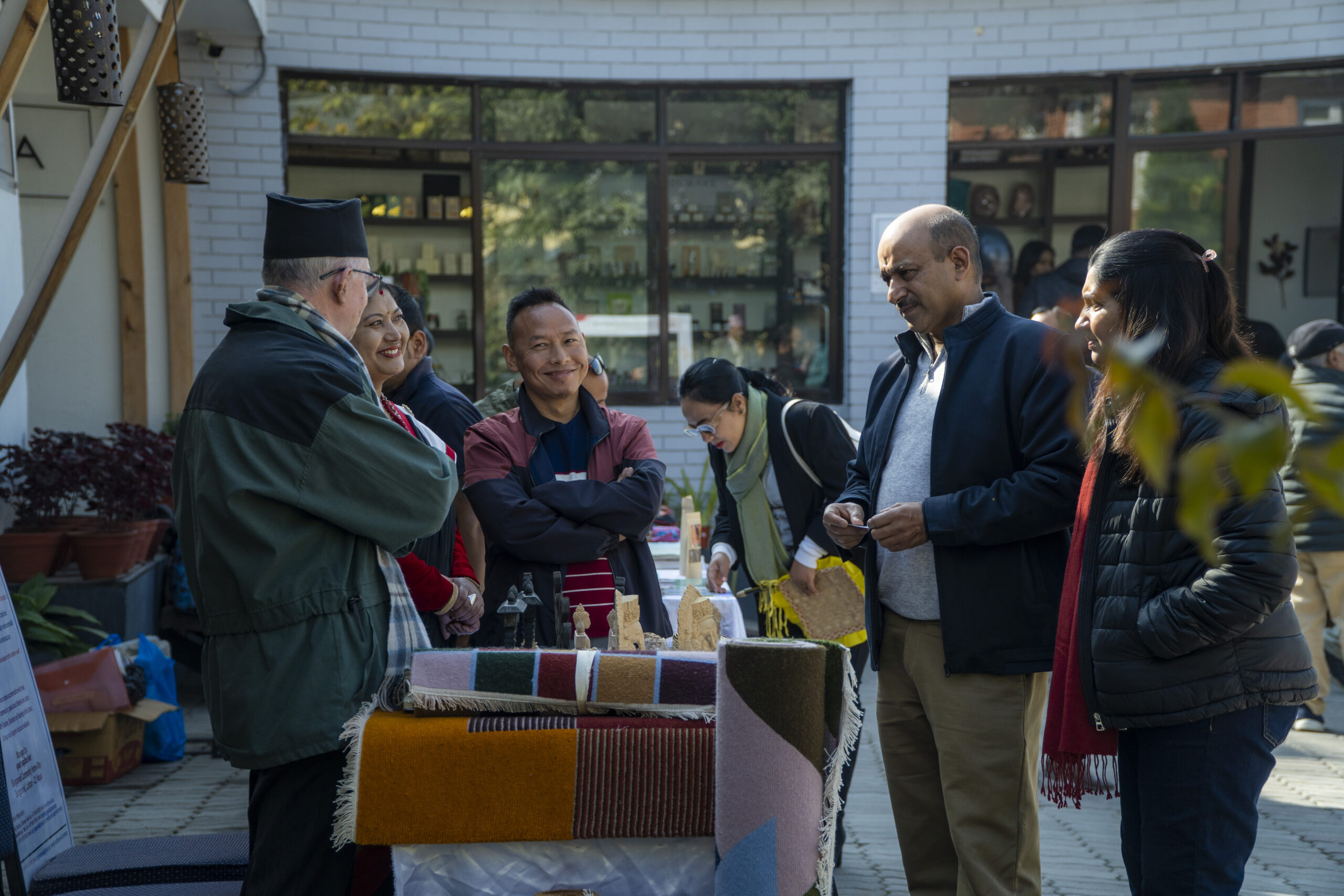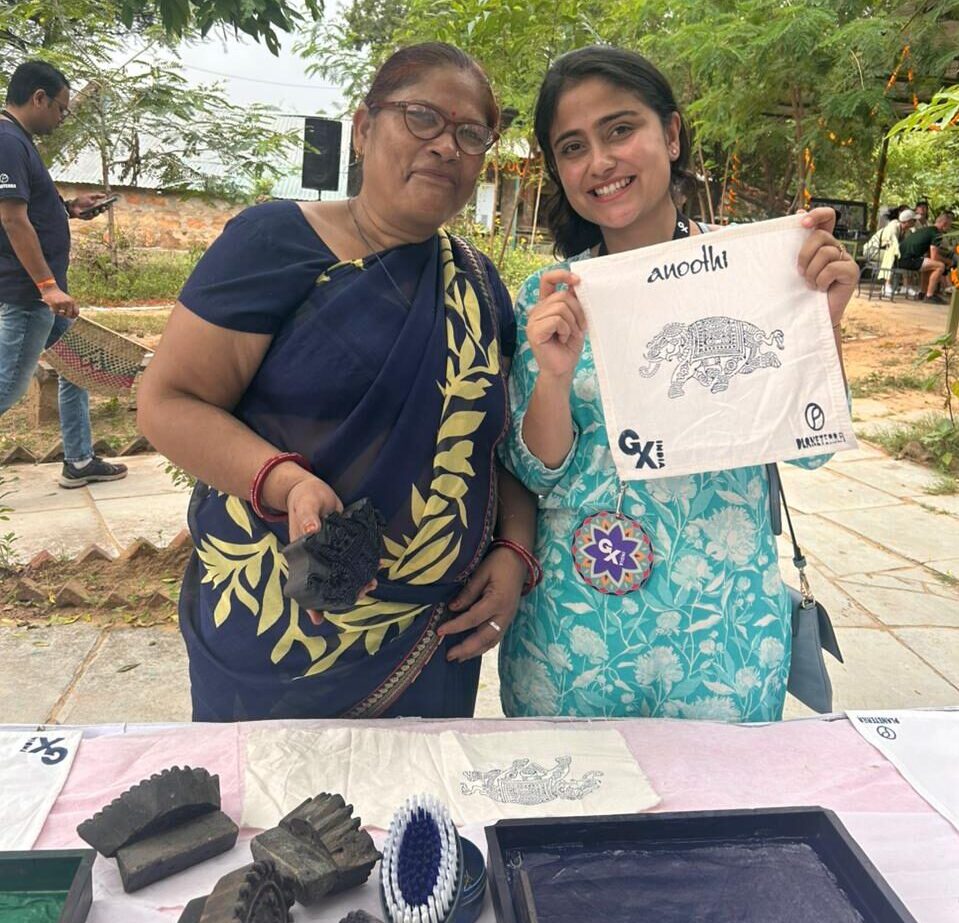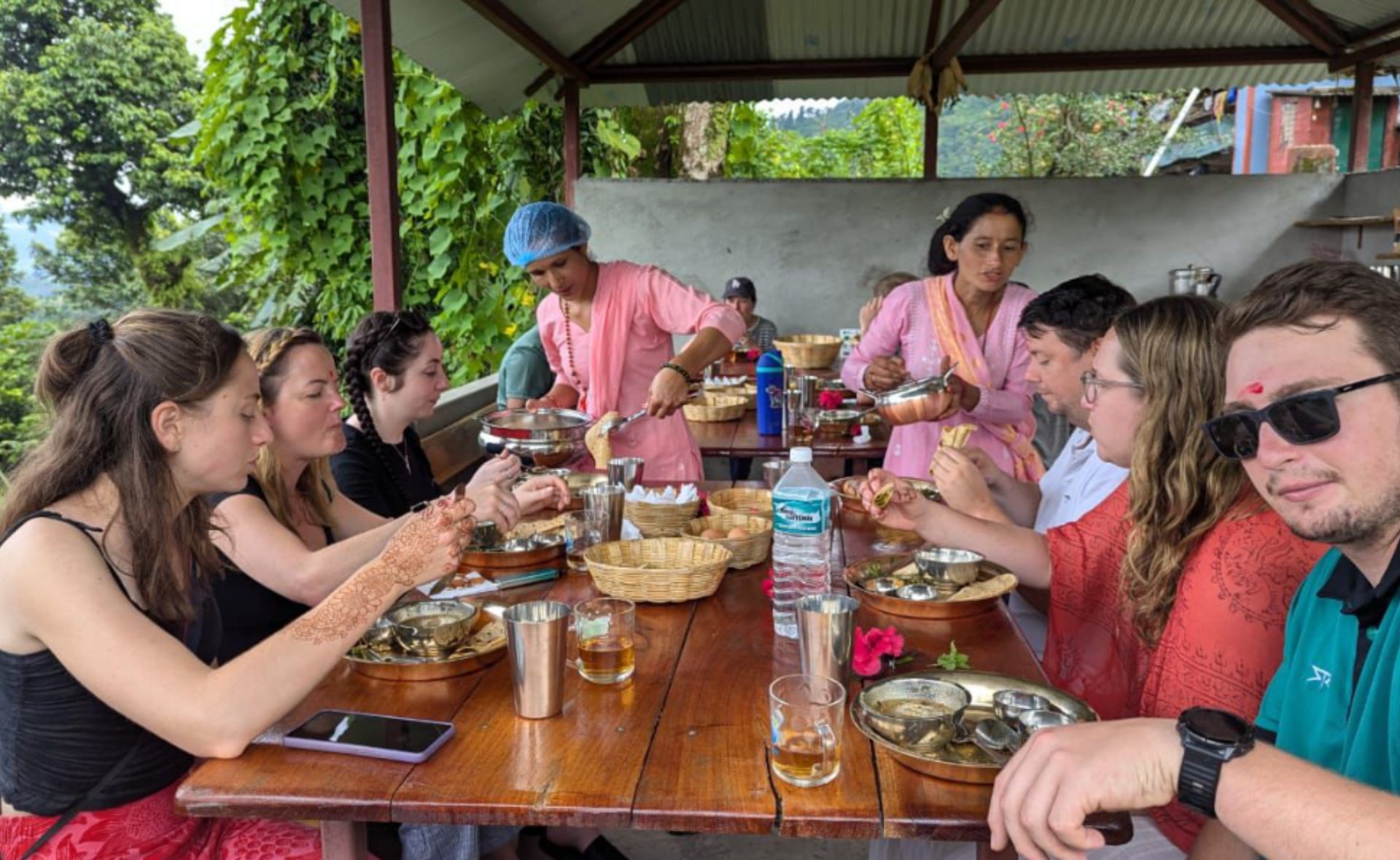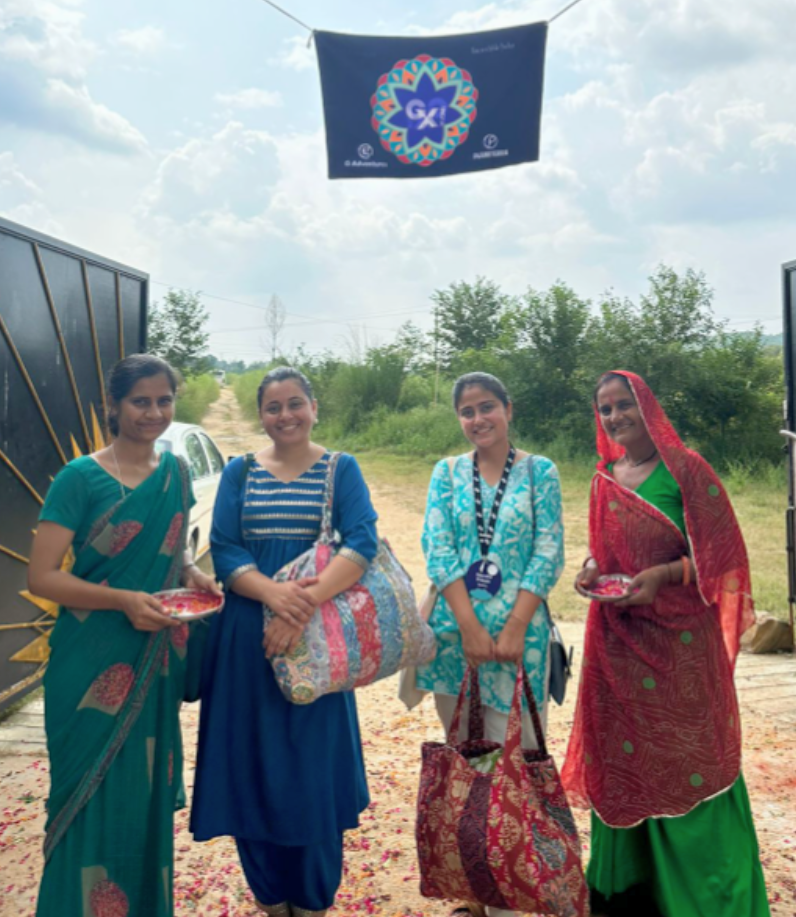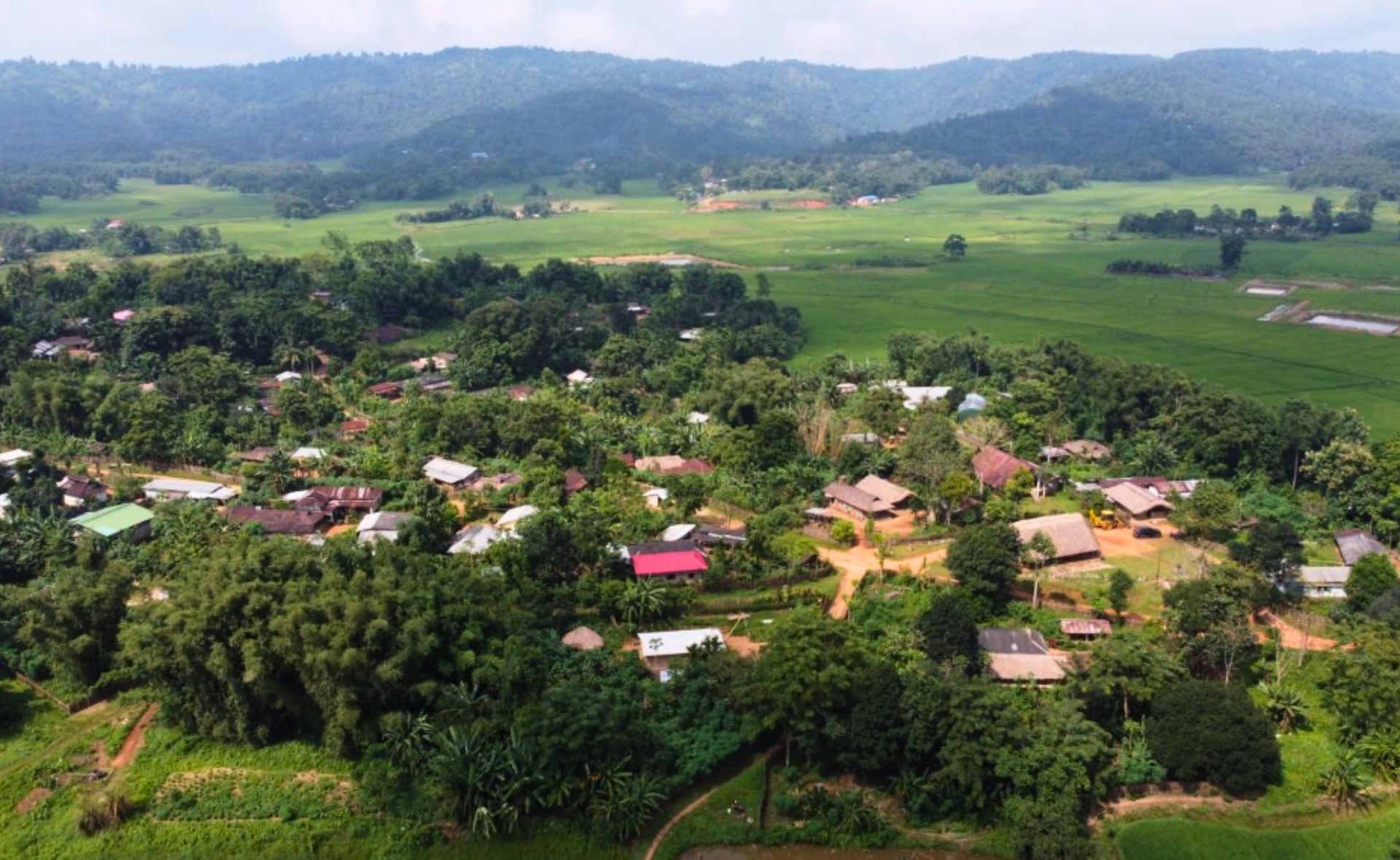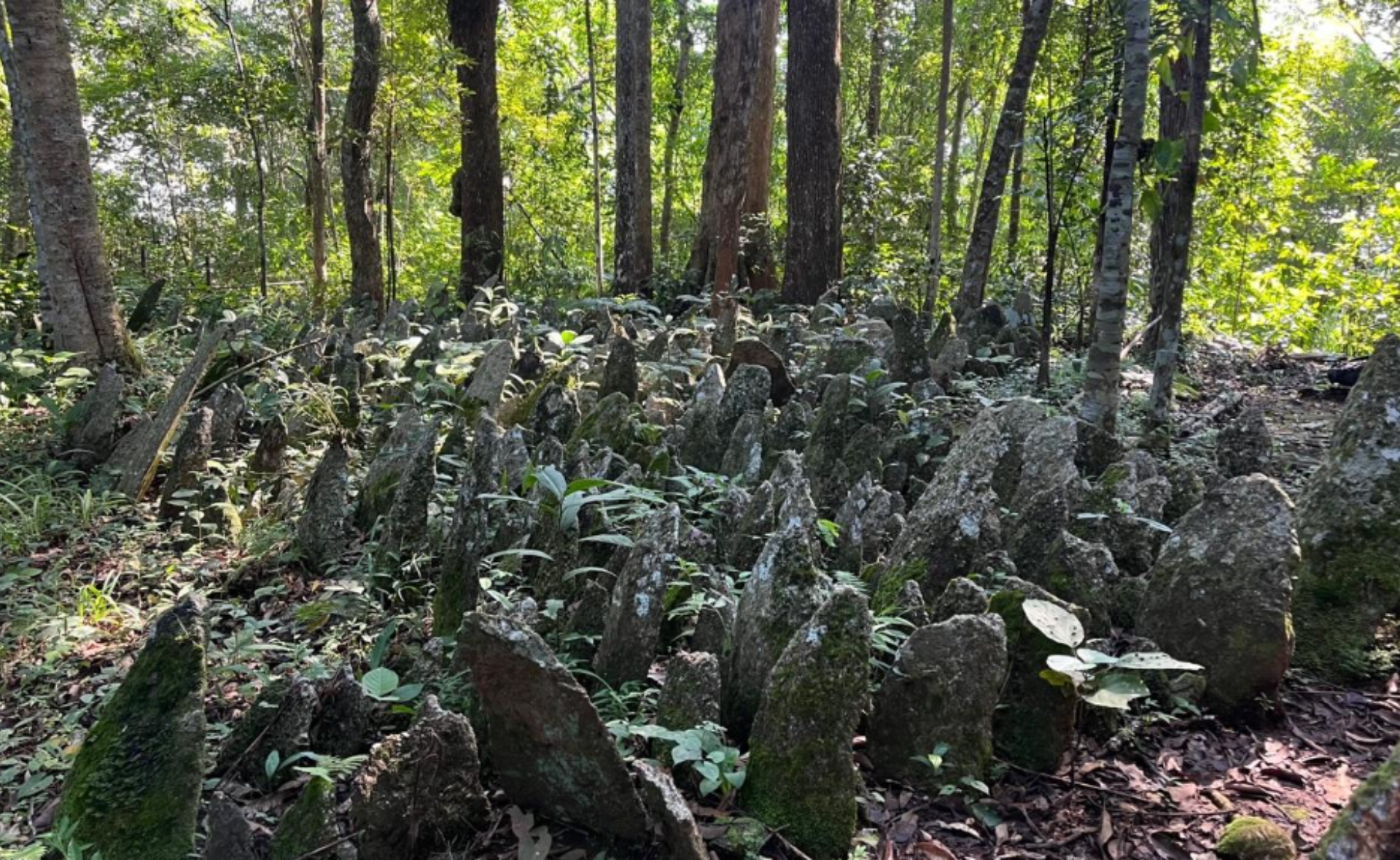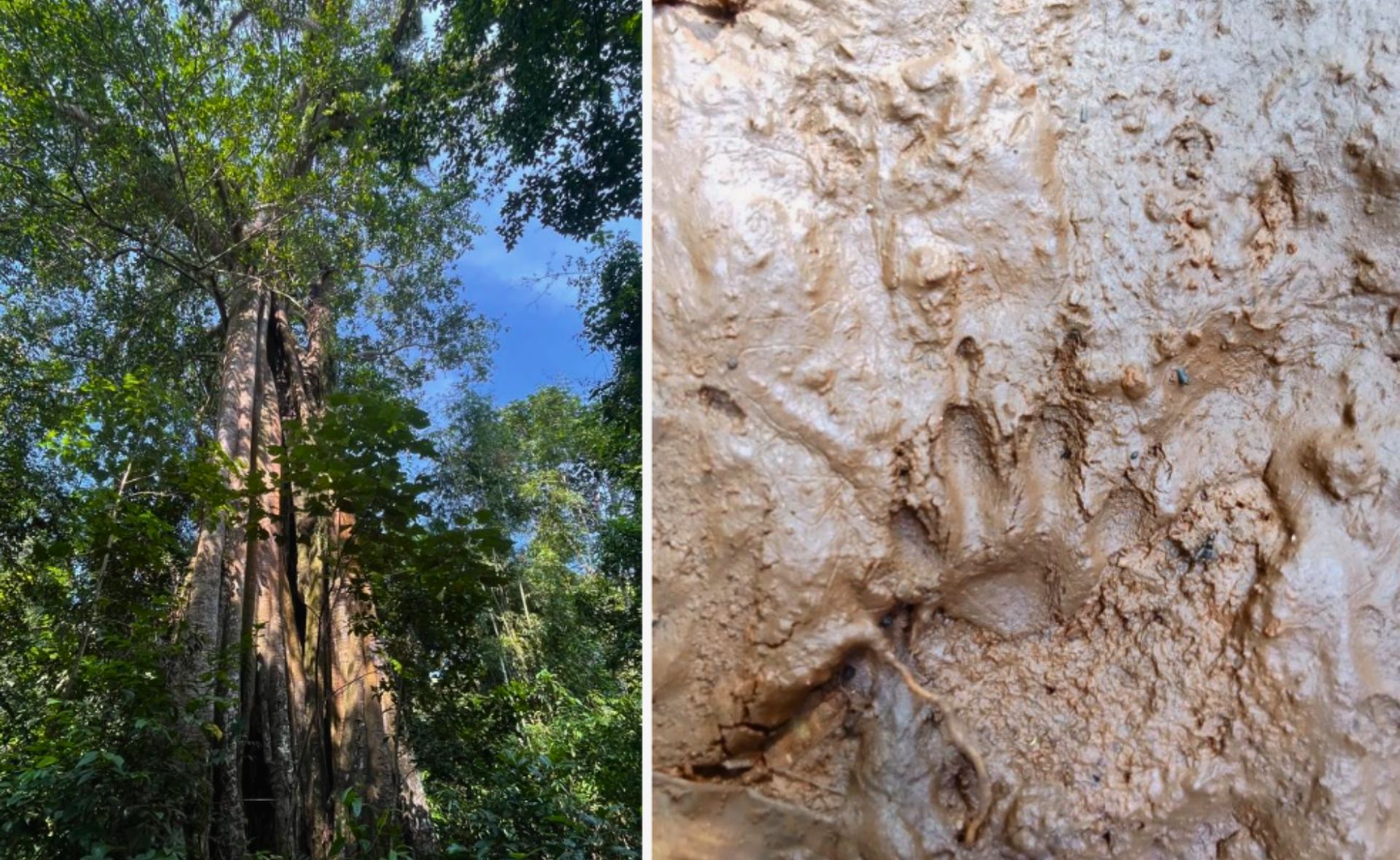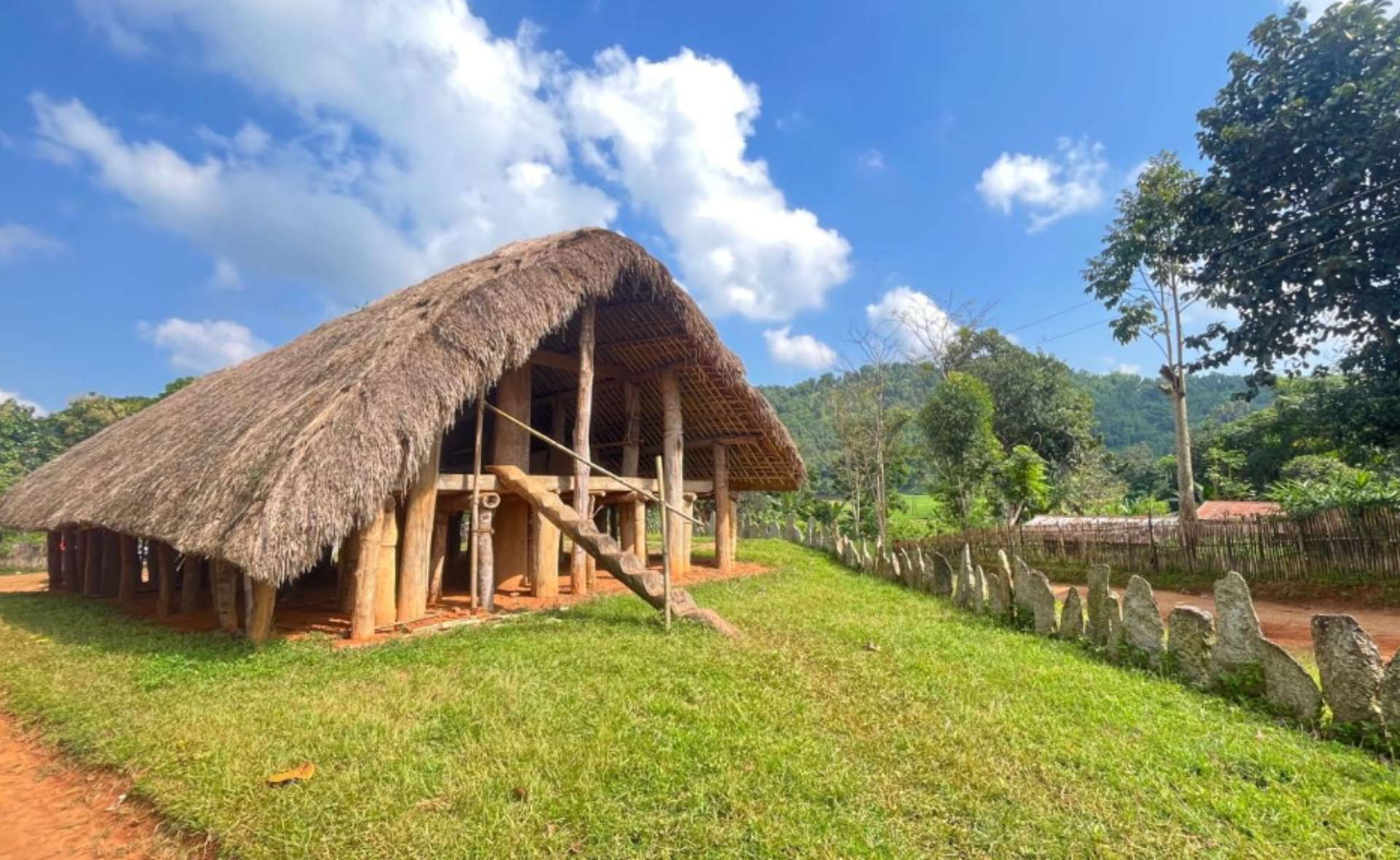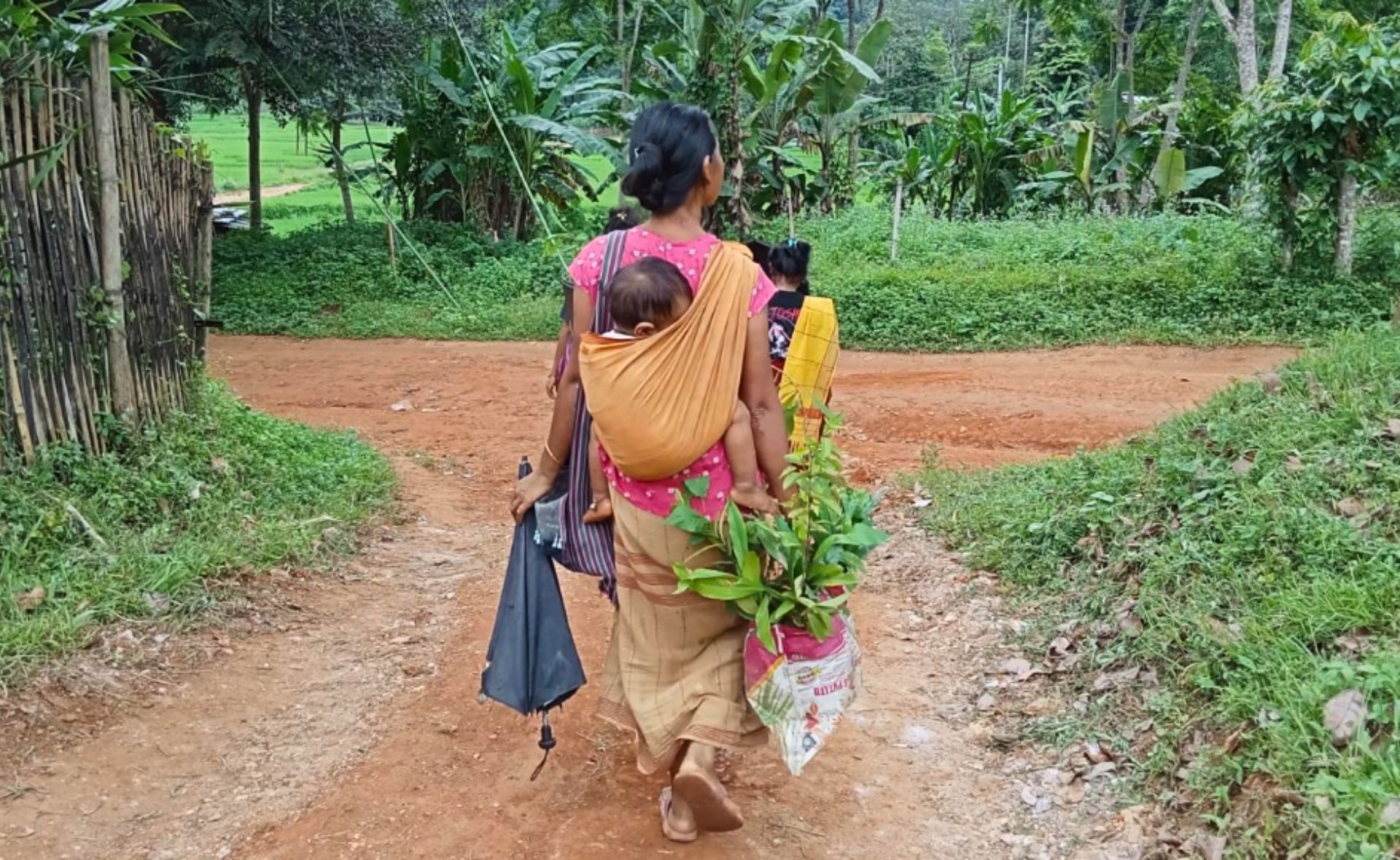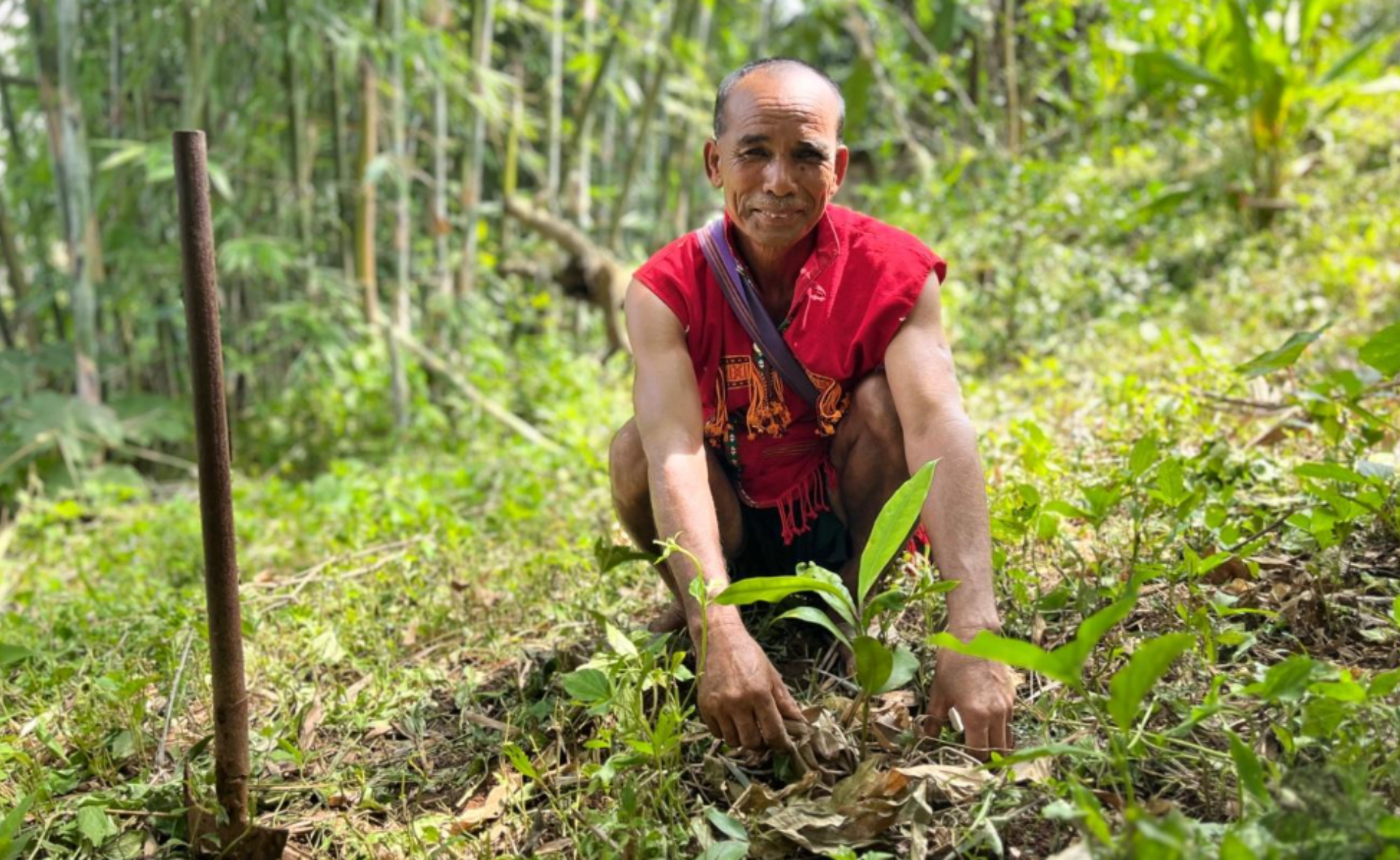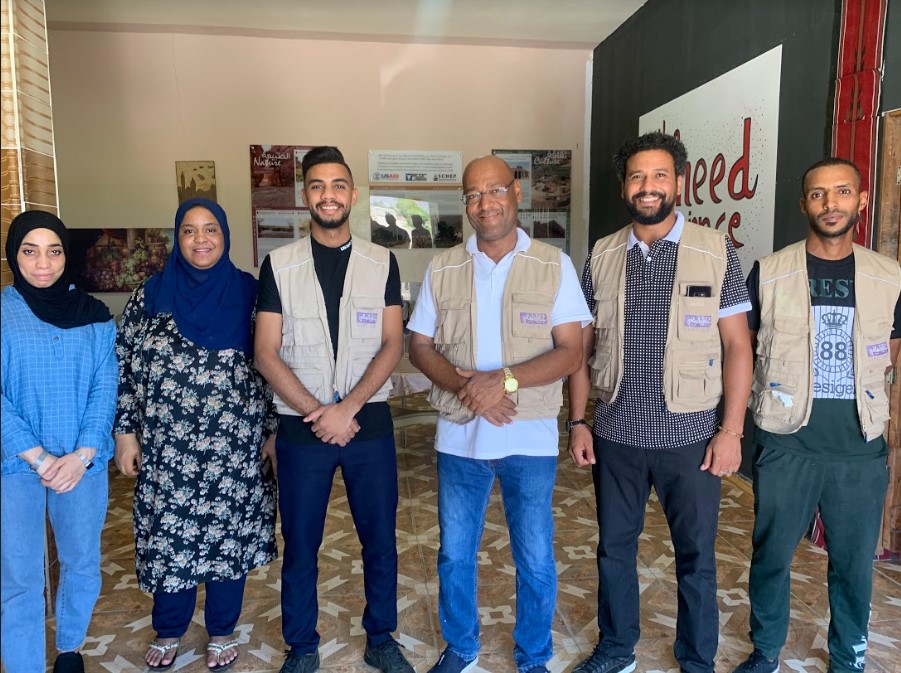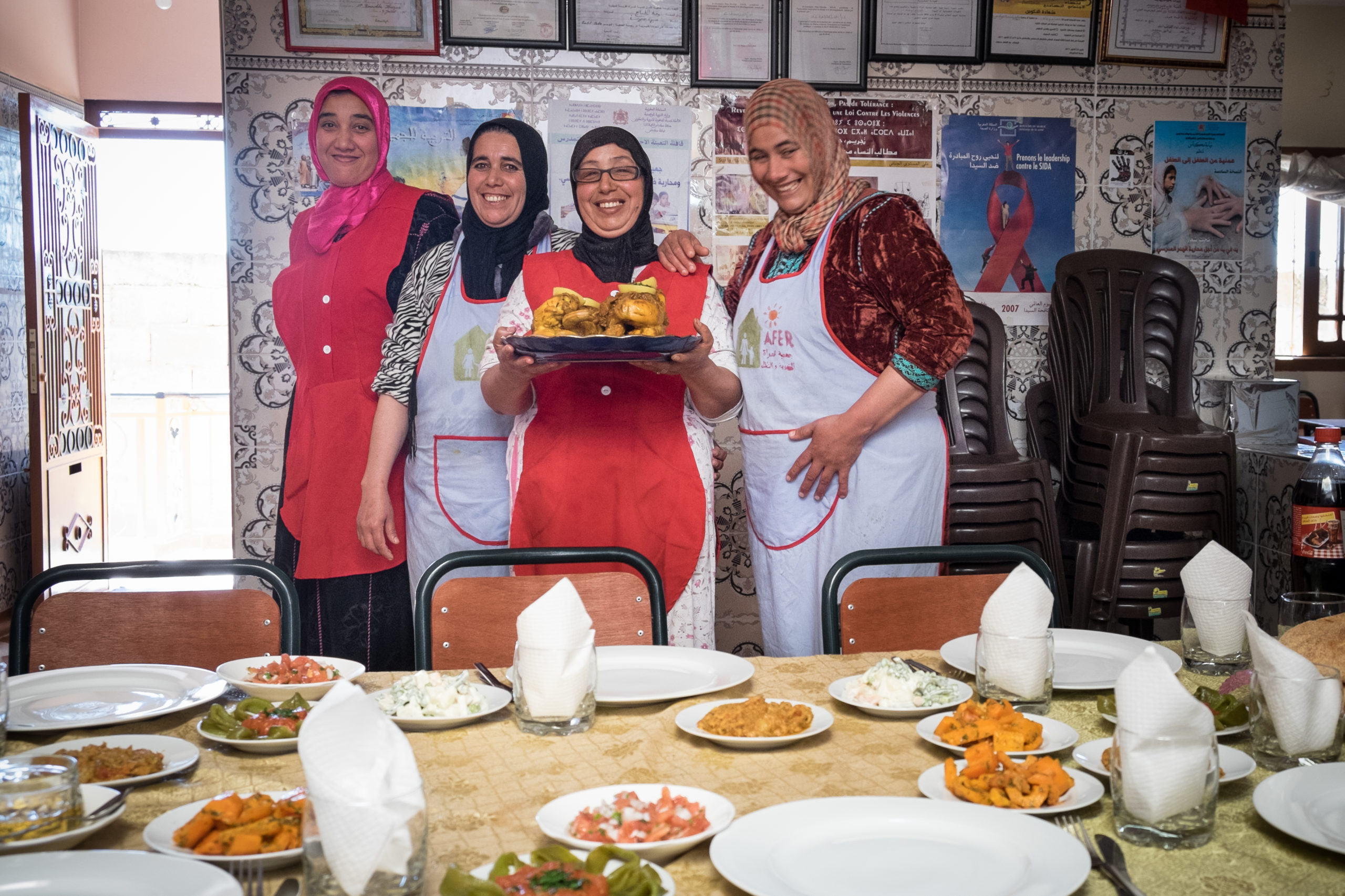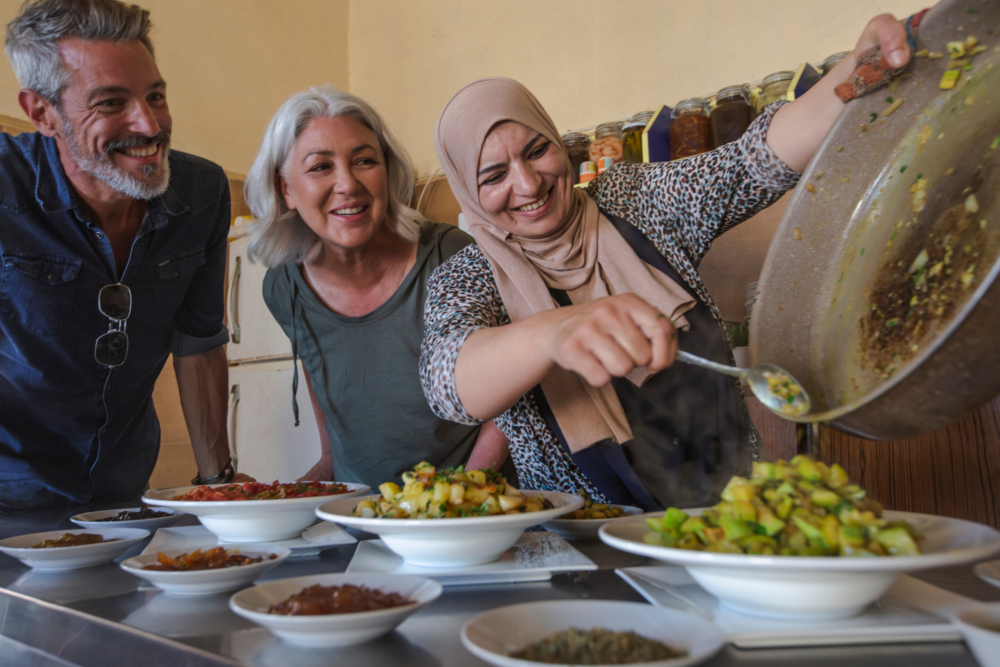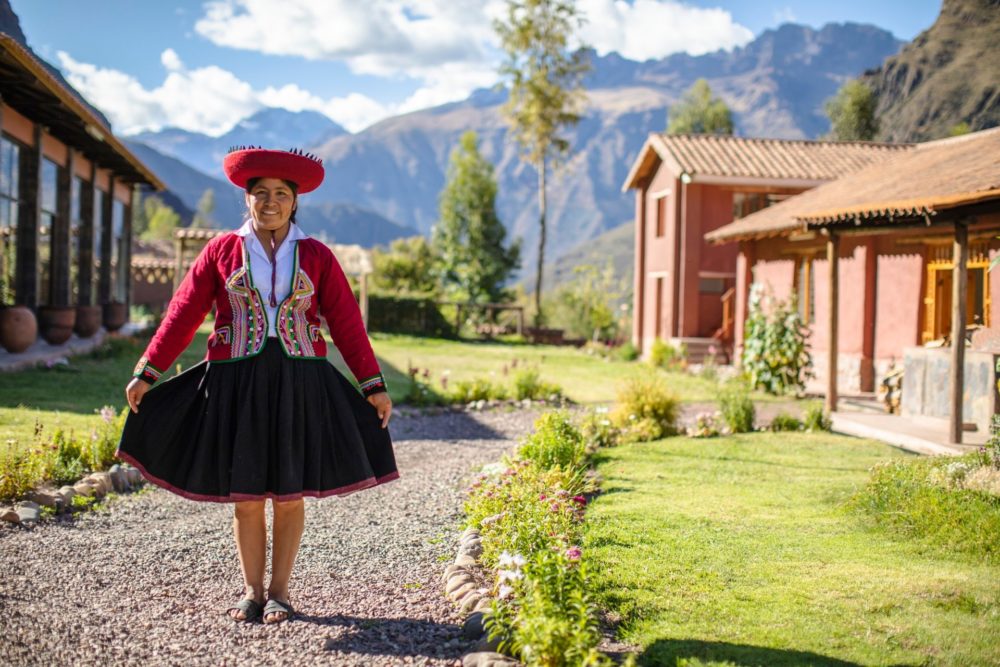Written by Loneta Progni, Journalist
What I learned from gliko, wool, and the warmth of locals
I’ve always believed that travel has the power to change us, but I didn’t expect this trip to southern Albania to shift my perspective so deeply. I joined a familiarization trip organized by Planeterra and their travel partner, Evaneos to explore what community tourism can look like when it’s done with real intention and engagement.
Trips like this come to life thanks to collaboration between community leaders, local DMCs, and organisations like Planeterra and Evaneos, who work to support and strengthen locally led tourism experiences.
And let me tell you: it was eye-opening.
For two full days, I had the chance to step into workshops, kitchens, living rooms, and traditions that many travelers never see, not because they aren’t there, but because they haven’t been given space to shine. That’s exactly what this initiative does: it gives communities the chance to share their craft, their stories, and their heritage in ways that support their economy and keep their identity alive.
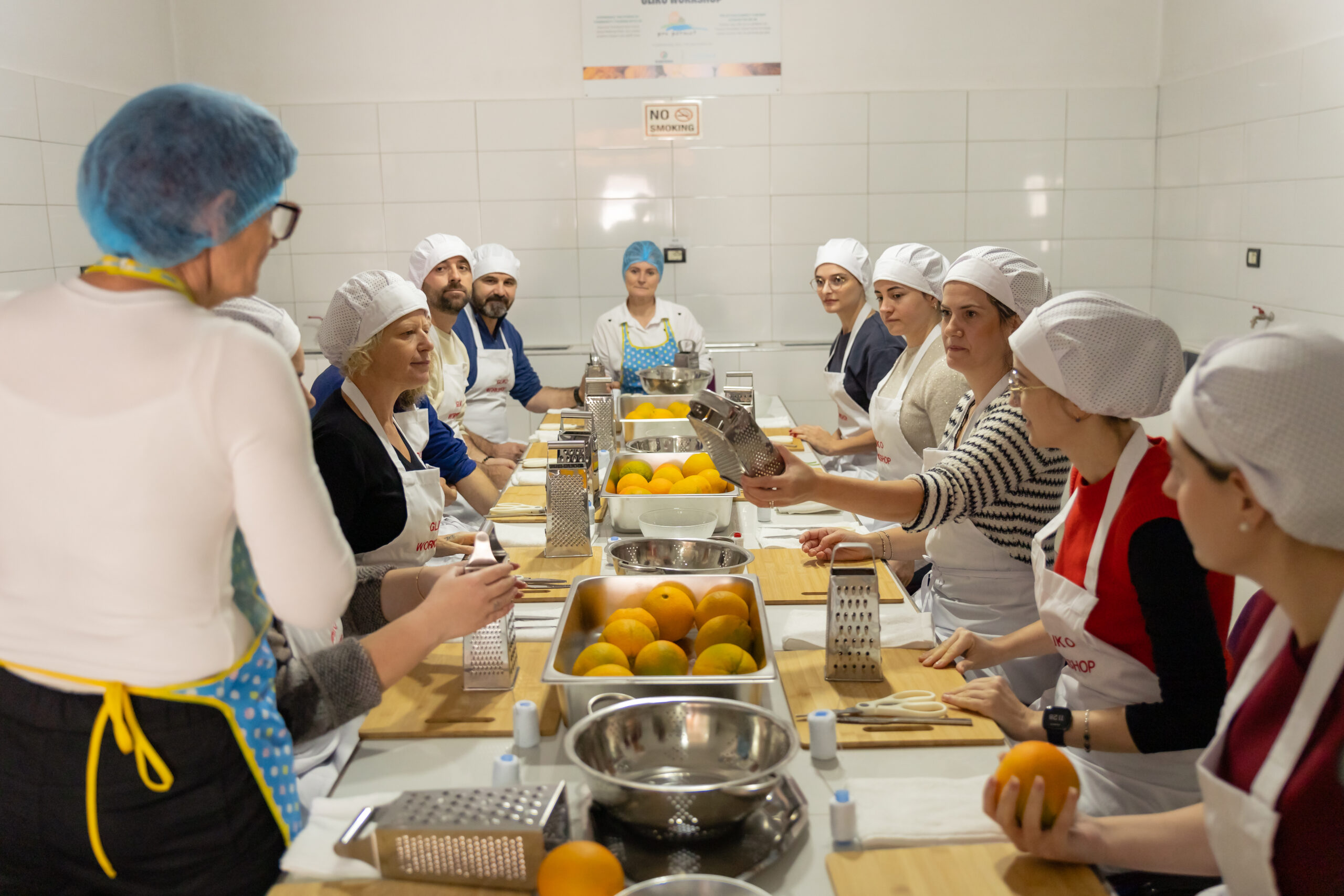
Day 1: Stirring sweet memories in Përmet
Përmet taught me about flavor, and tradition served on a small plate.
I joined the Gliko Workshop, an experience designed to preserve one of the region’s most cherished culinary traditions. Under the guidance of local women, we made gliko from scratch, learning not just the recipe but the meaning behind it.
Gliko isn’t just a dessert in Përmet. It’s hospitality. It’s identity.
It’s something every guest is welcomed with, and it carries generations of knowledge.
In between stirring pots, tasting gliko, and laughing with the women artisans guiding us, I realized how easily small traditions can vanish unless we create space for them. And this workshop is exactly that space, a bridge between the past and the future.
What made this even more meaningful was knowing the workshop was designed and led by local women themselves, with support from the local DMC and Planeterra to help bring their craft to travellers in a way that strengthens their own business.
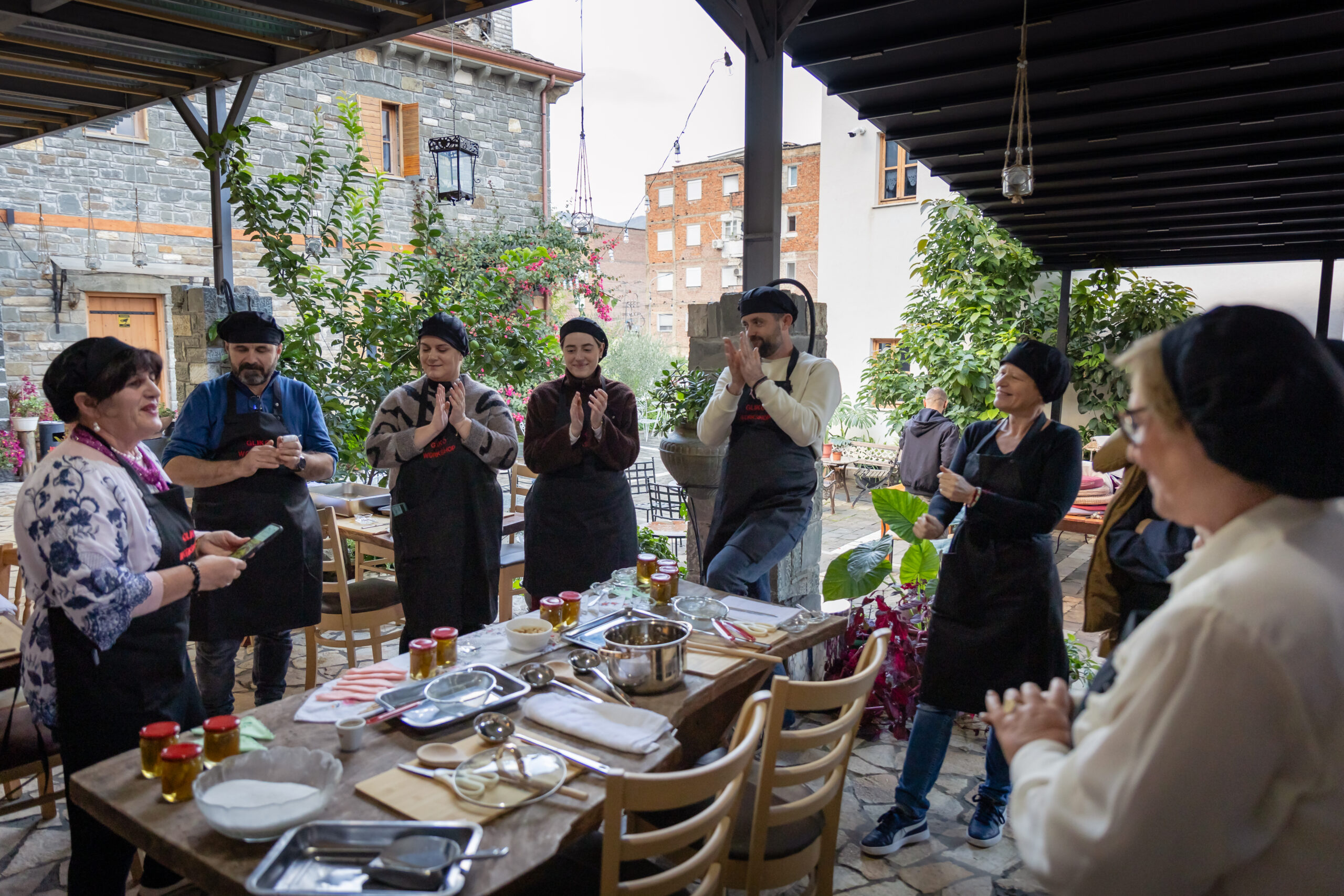
Why this project matters, beyond the experience
It’s one thing to visit a beautiful place.
It’s another to understand how your presence supports the people who live there.
Southern Albania is undergoing a quiet transformation. Areas like Përmet and Gjirokastër are welcoming more and more visitors each year, not just for their landscapes, but for their culture, craft, and stories.
Përmet now sees over 150,000 visitors annually.
Gjirokastër welcomed around 600,000 tourists in 2024.
These aren’t just numbers. They’re opportunities. They mean jobs, income for families, revived traditions, and hope for young people who might otherwise feel that leaving is their only option.
These kinds of opportunities grow when communities, travel partners, and supportive organizations work together to build experiences that reflect local identity and create lasting benefits.
Community tourism isn’t just “nicer tourism.” It’s impactful tourism, a model where local people aren’t just part of the scenery, but partners who benefit directly from the experiences offered.

Day 2: Learning to “read” wool in Lazarat
Our journey continued in Lazarat, a village often misunderstood, but rich in tradition and resilience. This time, we weren’t there for the stories the media usually tells. We were there for something much softer, quite literally.
The experience was named “From Wool to Weave,” and it took us directly into the hands of local women who have spent a lifetime mastering the craft. Watching raw wool slowly transform into blankets and textiles made me appreciate a truth I had overlooked:
Heritage survives because someone keeps doing the work.
The rhythm of their hands, the patience in their movements, the pride in their eyes, it all reminded me that craftsmanship is a form of storytelling.
And as if that wasn’t enough, the day ended with iso-polyphonic music, not a staged performance, but an authentic, spontaneous moment shared with the community. The kind of moment where you feel the room breathe together.
At the end of our day in Lazarat, we enjoyed a small dairy tasting, fresh cheeses, creamy yogurt, and homemade butter, all prepared by local producers. As we tasted each product, the room filled with the haunting harmonies of iso-polyphony. The combination of traditional flavours and ancient voices created one of the most authentic and unforgettable moments of the entire trip.

What I took with me from this trip
Of course I took some gliko and some handmade wool decoration for my christmas tree.
But I left feeling enriched, not only by the beauty of the places I visited, but by the sincerity of the people I met.
I felt grateful, for the music, the food, the craft, the stories, the warm welcome.
And I felt accountable, realizing that as travelers, journalists, or content creators, we help shape the kind of tourism we want to see.
Community tourism is not only possible in Albania, it’s happening. And if nurtured properly, it can be one of the country’s strongest tools for sustainable development, cultural preservation, and rural revitalization.
It also made me realize that behind each of these encounters is a quiet collaboration: community hosts, local operators, and organizations like Planeterra and Evaneos working together to ensure tourism supports local goals.
Final thoughts
This trip wasn’t just about discovering new places.
It was about rediscovering the meaning of travel.
Përmet and Lazarat… each of them taught me that tourism can be more than holidays and itineraries. It can be a shared effort between visitor and host, a collaboration that uplifts the people who protect the traditions travelers come to enjoy.
If Albania wants to stand out as an authentic destination, this is the path.
And I’m grateful I got to walk a small part of it.
About the author:
Loneta Progni is a journalist and TV anchor with over eight years of experience in national broadcasting, known for her clear reporting, engaging interviews, and human-centered storytelling. Alongside news coverage and feature reporting, she has profiled many of Albania’s cultural and regional destinations, bringing local stories and voices to wider audiences.
















